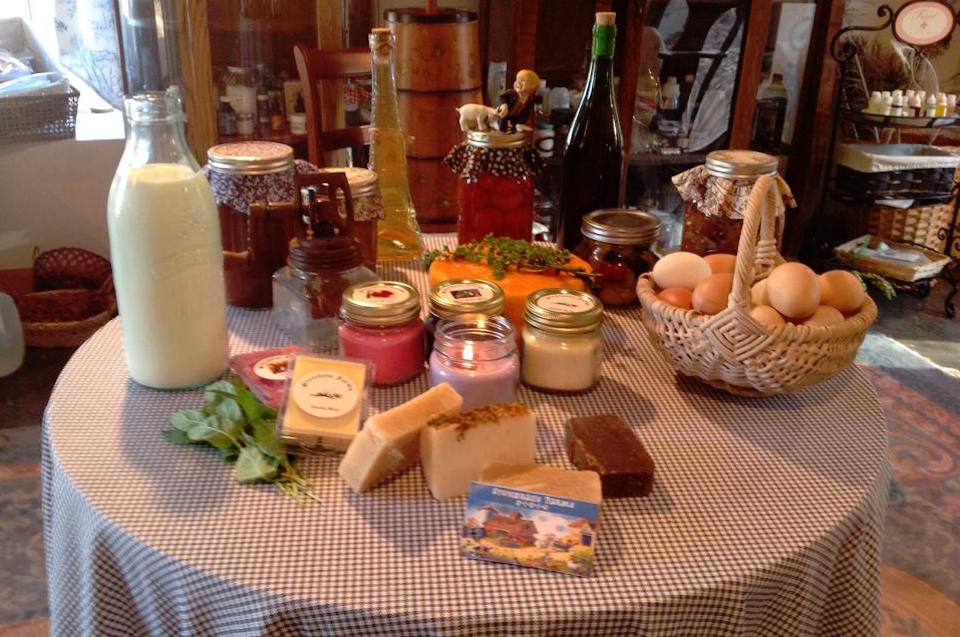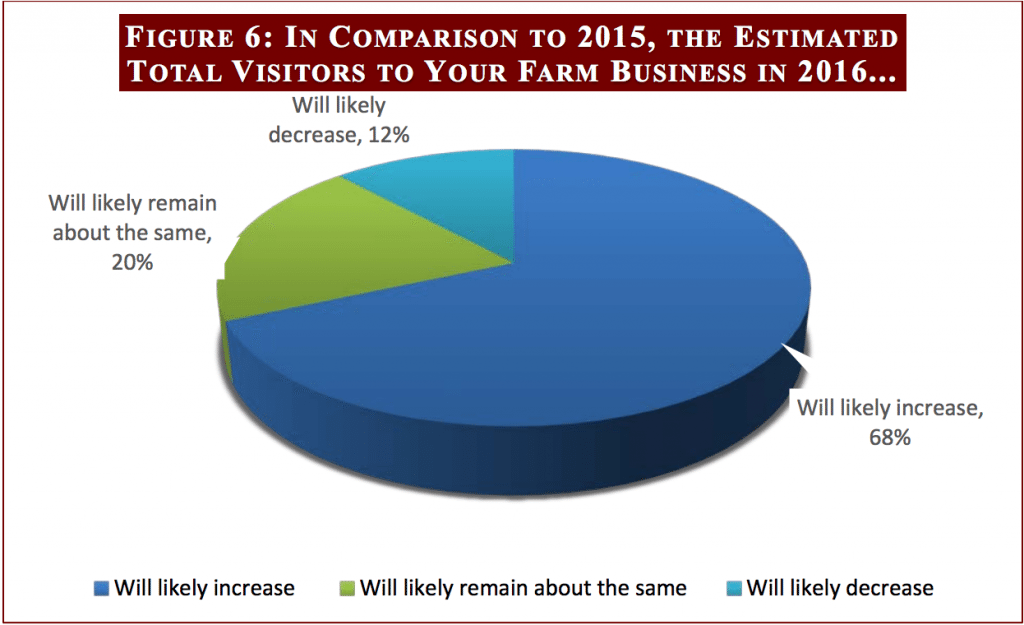Skift Take
At a time when climate change is already affecting destinations and scientific research is under attack in many parts of the world, millions of travelers -- lured by their love of local foods -- help make agritourism a factor that tourism boards can't ignore.
Locally produced foods and unique home-grown restaurants are increasingly one of the main hooks to entice travelers to visit one destination over another, and many tourism bodies are factoring in the trend.
Virginia recently collaborated on a study of its statewide agritourism industry and found that the economic impact from tourists visiting farms was about $1.2 billion in 2015.
“The number of agritourism venues in Virginia in past 20 years has grown astronomically,” said Esra Calvert, director of research for the Virgina Tourism Corporation, the destination marketing organization for the State of Virginia. “Around 2005, there were about 500 venues across the state and today there are more than 1,400 venues that we could track. That was eye-opening to us and how the products and consumers are changing and that was a good surprise.”
Agritourism can be defined as any agriculturally-based operation or activity that brings visitors to a farm or ranch, and it is one of the fastest-growing forms of global tourism with an economic impact of more than $1 billion in many U.S. states and countries.
Researchers at Virginia Tech’s Pamplin College of Business conducted the study and worked with the Virginia Tourism because they had observed the growth in tourists seeking agriculture-related activities in the state.
“One thing that jumped out at me is just how diverse the agritourism industry in Virginia is,” said Vince Magnini, a professor in Pamplin’s department of hospitality and tourism management and the lead researcher for the study. “Agritourism in a lot of Virginia has a lot of successful offerings besides fresh vegetable stands — it extends far beyond that in Virginia. On-farm distilleries are coming on strong, for example.”
Visiting farms remains an activity that’s more popular with locals in drive markets than with travelers. Some 7.5 million people visited farms in Virginia in 2015, the study found, but about 60 percent of those visitors came from less than 50 miles away.
Non-local agritourists in Virginia, or those who live more than 50 miles from the farms they visit, spend more than local visitors. In 2015, local visitors to Virginia farm businesses spent $72.4 million while non-local visitors spent $84.1 million.
Agritourism also means big business off the farm — visitors spent more than $1.3 billion at hotels, restaurants, souvenirs shops, entertainment venues and campgrounds, for example, in Virginia in 2015 (see chart below).
“Looking at other studies in Virginia, these experiential or foodie travelers who visit farms are also cultural travelers,” said Calvert.
“For the agri-farm business, it’s also a lifestyle. Travel is a lifestyle industry and we’re moving from mass industries to niche industries,” she said.
Off-Farm Spending Tied To Virginia Agritourism in 2015
| Spending Category | Amount |
|---|---|
| Hotels/Motels | $225.2M |
| Restaurants | $223.6M |
| Entertainment | $214.3M |
| Groceries | $149.5M |
| Transportation expenses (excluding gasoline) | $146.2M |
| Gasoline | $109.4M |
| Souvenirs | $97.4M |
| Clothing | $60M |
| Camping fees and charges | $41M |
| Sporting equipment | 40.8M |
| Total | $1.3B |
Source: Virginia Tech Pamplin College of Business
Why Focus on Agritourism?
It’s increasingly difficult to find a destination that isn’t in some way trying to brand itself as a wine or craft beer hotspot. In Virginia, there are 200 craft beer venues when two years ago there were only about a dozen, said Calvert.
Farmers are capitalizing on the craft beer and wine trend in hopes of standing out from competition and getting travelers to spend more on their farms versus spending elsewhere.
“Agritourism in the U.S. is young compared to other parts of the world such as Europe,” said Magnini. “But it’s really been catching up in U.S. in the last couple of decades. In Virginia, we found one-third of the state’s agritourism inventory has been added since 2010.”
Based on a survey part of the study, Virginia farmers said the top three factors for why they operate agritourism businesses are to generate income, marketing their products and sharing a lifestyle. “People don’t want to just buy the bottle of wine and box of chocolates,” said Calvert. “They want to meet the owner and know how it’s made.”
As the chart below highlights, 68 percent of farmer respondents said the number of visitors to their farms would likely increase in 2016 compared to 2015. Some 50 percent of respondents also said the amount of visitor spending during each of the past five years has been increasing.
Source: Virginia Tech Pamplin College of Business
What Virginia’s Agritourism Means For Other Destinations
Like many other tourism sectors, agritourism has been disrupted by evolving technology that’s helped farms improve their offerings to visitors.
Using drones to monitor vineyards is one example of how some of Virginia’s farms have changed with the times, said Calvert. “We asked ‘how do we adapt to urbanization, changing technology and an aging population’ when we started this study,” she said. “Quality is improving and we’re making products available at the local level. The amount of information accessible to the consumer is immense.”
To Calvert’s point about urbanization, many farms are located outside of urban areas not easily accessible by public transportation. Magnini said past studies indicate that farms’ agritourism success comes from their proximity to road and transportation infrastructure.
Although many visitors drive their own vehicles to farms, many farmers compensate for the lack of public transportation by heavily relying on school field trips. More than half of Virginia’s farms have the capabilities to host tour groups and school field trips, the latter one of the most popular types of agritourism.
Top 10 Most Frequently Offered Agritourism Activities in Virginia in 2015
| On-Farm Activities | % of Venues Offering |
|---|---|
| Tours/field trips | 52.70% |
| Festival/event | 38.20% |
| Wedding/reunion/social gathering | 34.50% |
| Retail goods purchased on the farm | 32.40% |
| Beer, cider, spirits or wine tasting | 26.40% |
| Educational workshop | 24.30% |
| Produce, meat, dairy or honey purchased on farm | 23.70% |
| Animal observation/petting | 23.30% |
| On-farm lodging or camping | 17.60% |
| Hayride | 15.20% |
Source: Virginia Tech Pamplin College of Business
Agritourism in the Trump Era
President Trump has proposed slashing the U.S. Department of Agriculture’s budget by 21 percent ($4.7 billion) for the fiscal year 2018 to $17.9 billion.
The president’s Secretary of Agriculture nominee, former Georgia Governor Sonny Perdue, is expected to receive a confirmation vote by the full U.S. Senate this week.
What that means for farmers and agritourism remains unclear but the president’s budget states that farmer-focused research and extension partnerships at land-grant universities will continue to be supported.
“In addition, the budget focuses in-house research funding within the Agricultural Research Service to the highest 12 Department of Agriculture priority agriculture and food issues such as increasing farming productivity, sustaining natural resources, including those within rural communities and addressing food safety and nutrition priorities,” the White House budget document states.
Climate change is also an ongoing challenge and threat to many farms around the world, including in Iceland where dairy farmers are already facing problems from a warming climate and too many tourists, The Atlantic reported last month.
Calvert and Magnini noted that Trump’s proposed budget cuts weren’t part of the study but that sustainability is key for agritourism’s future. “Of course we want to increase visitation at farms but increase visitation in a healthy manner,” said Calvert. “It’s about making money but it’s also about the people and planet aspect and we’ve always discussed that.”
Still, with 22,000 jobs, $840 million in wage and salary income and $135 million in state and local taxes generated by agritourism in Virginia alone, farmers and tourism boards won’t pull back on their marketing for agricultural offerings anytime soon.
The Daily Newsletter
Our daily coverage of the global travel industry. Written by editors and analysts from across Skift’s brands.
Have a confidential tip for Skift? Get in touch
Tags: agritourism, tourism, virginia
Photo credit: Agritourism is big business for the travel industry. Stonehaus Farms in Martinsville, Virginia runs tours and sells the fruits -- and cheeses -- of its labors. Stonehaus Farms

